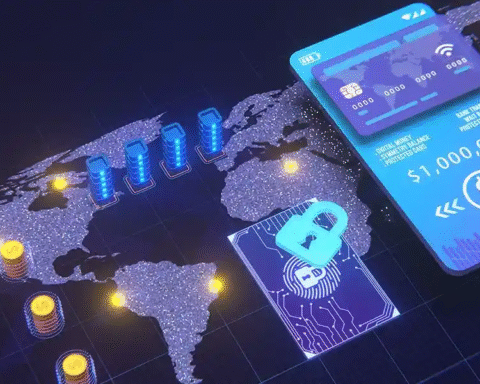Ecommerce is no longer just a trend — it’s the future of shopping. With millions of people choosing apps over physical stores or even websites, building your own ecommerce app can be the smartest business move you make.
From small startups to global brands, businesses are investing in apps to improve customer experience, increase sales, and build long-term loyalty. For many, exploring solutions like bigcommerce app development provides a powerful way to combine flexibility with scalability, making it easier to serve customers in today’s highly competitive market.
But where do you start if you want to create an ecommerce app? What steps are involved, and what mistakes should you avoid?
This detailed guide walks you through the full process of building an ecommerce app — from idea and planning to launch and growth. Whether you’re just starting out or expanding an existing store, this step-by-step breakdown will help you understand what it takes to succeed.
1. Do Your Research and Know Your Customers
The first step in building any ecommerce app is understanding your target audience. Without research, you risk building an app that nobody really wants.
Here’s what you should focus on:
- Customer pain points: What problems do shoppers face when buying online? Is the checkout too long? Are returns complicated? Do they want faster delivery updates?
- Market gaps: Look at popular apps in your industry. What are they missing? Maybe they don’t have good product recommendations, or their search filters are weak.
- Competitor analysis: Study at least 3–5 competitor apps. List out their strengths and weaknesses. Ask yourself: what can I do better?
- User habits: Are your customers more likely to shop on iPhones or Android devices? Do they prefer browsing on weekends or late nights? This helps with design and push notifications.
Pro tip: Create user personas — fictional profiles that represent your ideal customers. For example:
- Sarah, 29, busy professional, shops during lunch breaks, values quick checkout.
- Ali, 40, parent of two, wants reliable delivery tracking and flexible payment methods.
These personas help you design the app around real needs.
2. Define Your Goals and Features
Once you know your audience, define what your ecommerce app will achieve. Ask yourself:
- Do I want to increase online sales?
- Do I want to make checkout easier and faster?
- Do I want to build stronger customer loyalty through personalization?
With goals in place, start listing features. Here are core features every ecommerce app should include:
- User account & profiles
Customers should be able to sign up easily (email, phone, or social login). - Product catalog & search
A well-organized catalog with filters and search options saves time. - Shopping cart & checkout
A simple cart and secure, fast checkout is a must. - Payment integrations
Offer multiple methods (credit cards, PayPal, Apple Pay, Google Pay, etc.). - Shipping & tracking
Customers want real-time updates on their orders. - Push notifications
Send personalized offers, restock alerts, or delivery updates. - Ratings & reviews
Build trust by letting customers share their experiences.
Start small with these core features in your Minimum Viable Product (MVP). Once you get user feedback, add advanced features like:
- AI-based recommendations
- Augmented reality (AR) previews
- Wish lists and gift cards
- Loyalty rewards programs
3. Choose the Right Development Approach
The way your app is built will affect cost, time, and performance. There are three main approaches:
Native Apps
- Built separately for iOS and Android.
- Best for performance and smooth user experience.
- Higher cost since you need two versions.
Cross-Platform Apps
- One codebase works on both iOS and Android.
- Faster development and cost-effective.
- Performance is good, but sometimes limited for complex apps.
Hybrid Apps
- Built using web technologies inside a native wrapper.
- Cheaper and faster but less powerful for advanced ecommerce apps.
Tip: If you’re a small business, start with cross-platform. If you’re a large brand with budget, native apps can give you the best performance.
4. Design for an Easy and Engaging Shopping Experience
Design is more than looks — it’s about usability. Customers should never feel lost or frustrated while shopping.
Key design principles:
- Keep navigation simple: Menus should be clear and not overcrowded.
- Highlight products: Use high-quality images and clean layouts.
- Consistent visuals: Stick to one color palette, font style, and button shape.
- Responsive design: Make sure the app looks good on all screen sizes.
Example: Think about how Amazon makes it easy to find and buy products within a few clicks. Your goal should be the same — fewer taps, faster checkout.
5. Development and Testing
Now comes the actual building of your ecommerce app. Most businesses use an Agile method, meaning development happens in short cycles (sprints). This allows quick testing and improvements.
Types of testing you must do:
- Functional testing: Check if browsing, adding to cart, and checkout work properly.
- Performance testing: Make sure the app loads fast and doesn’t crash.
- Security testing: Protect sensitive customer and payment data.
- User testing: Give early access to a small group of users and get real feedback.
Remember: Bugs and slow apps kill trust. Continuous testing is not optional — it’s necessary.
6. Backend and API Integrations
Your app’s backend is what powers everything behind the scenes. A strong backend ensures smooth operations.
Key backend needs:
- User management: Handle logins, accounts, and preferences.
- Product data storage: Manage product info, inventory, prices, and images.
- Payment processing: Securely handle transactions.
- Order tracking: Update users in real time.
You’ll also need to integrate with APIs (third-party services). Common ecommerce APIs include:
- Payment gateways (Stripe, PayPal, etc.)
- Shipping services (FedEx, UPS, DHL)
- Social media logins
- Analytics tools (Google Analytics, Firebase)
7. Security and Data Protection
Ecommerce apps handle sensitive data like credit card numbers, emails, and addresses. A single data breach can destroy customer trust.
Security measures to follow:
- Use SSL encryption for all data transfer.
- Store passwords securely (hashed, never plain text).
- Limit access to data with role-based permissions.
- Follow privacy laws like GDPR (Europe) or CCPA (California).
- Regularly update your app to patch security gaps.
8. Launch and Beyond: Marketing, Feedback, and Updates
Building the app is half the journey. The other half is launching and keeping it alive.
Pre-Launch
- Create buzz with teasers and countdowns.
- Offer early access to loyal customers.
- Set up landing pages and email sign-ups.
Launch
- Optimize your app store listing with strong keywords, screenshots, and reviews (App Store Optimization).
- Run ads on social media or Google.
- Collaborate with influencers to promote your app.
Post-Launch
- Collect feedback from customers.
- Fix bugs quickly.
- Release updates with new features.
- Track performance with analytics.
Remember: A successful ecommerce app is never “done.” It’s always improving.
9. Cost and Budget Breakdown
How much does it cost to build an ecommerce app? It depends on many factors:
- Features: More features = higher cost.
- Platforms: Native apps cost more than cross-platform.
- Design: A custom UI/UX design increases costs.
- Team size: Developers, testers, designers, and managers add up.
- Integrations: Advanced tools like AR, AI, and payment methods cost extra.
On average:
- A simple ecommerce app might cost $20,000–$40,000.
- A medium-complexity app could be $50,000–$100,000.
- A large, enterprise app may go beyond $150,000.
Tip: Always plan for ongoing costs like maintenance, hosting, updates, and marketing.
10. Future Trends in Ecommerce Apps
Technology moves fast, and your app should stay ahead. Here are the biggest trends to watch:
- AI & Machine Learning: Personalized recommendations and smarter search.
- AR (Augmented Reality): Let users “try before they buy” (like IKEA’s AR furniture app).
- Voice Commerce: Shopping with voice assistants like Alexa or Google Assistant.
- Faster Payments: One-click payments, buy-now-pay-later options.
- Wearables & IoT: Shopping directly from smartwatches or smart home devices.
Apps that adapt to these trends will stay competitive for years to come.
Final Thoughts
Building an ecommerce app is not a one-day project. It requires careful planning, research, strong development, and continuous updates. Start with the basics, focus on user needs, and grow step by step.
With the right approach, your ecommerce app can become a powerful tool to increase sales, build customer loyalty, and future-proof your business.
Why Choose Folio3
If you’re serious about building your own ecommerce app, you don’t have to do it alone. Folio3 specializes in ecommerce app development services that cover everything from strategy and design to launch and ongoing support.
With years of experience helping businesses of all sizes, Folio3 can turn your idea into an app that delights customers and drives results. Whether you need a simple MVP or a full-featured custom ecommerce solution, Folio3 has the skills and expertise to make it happen.








